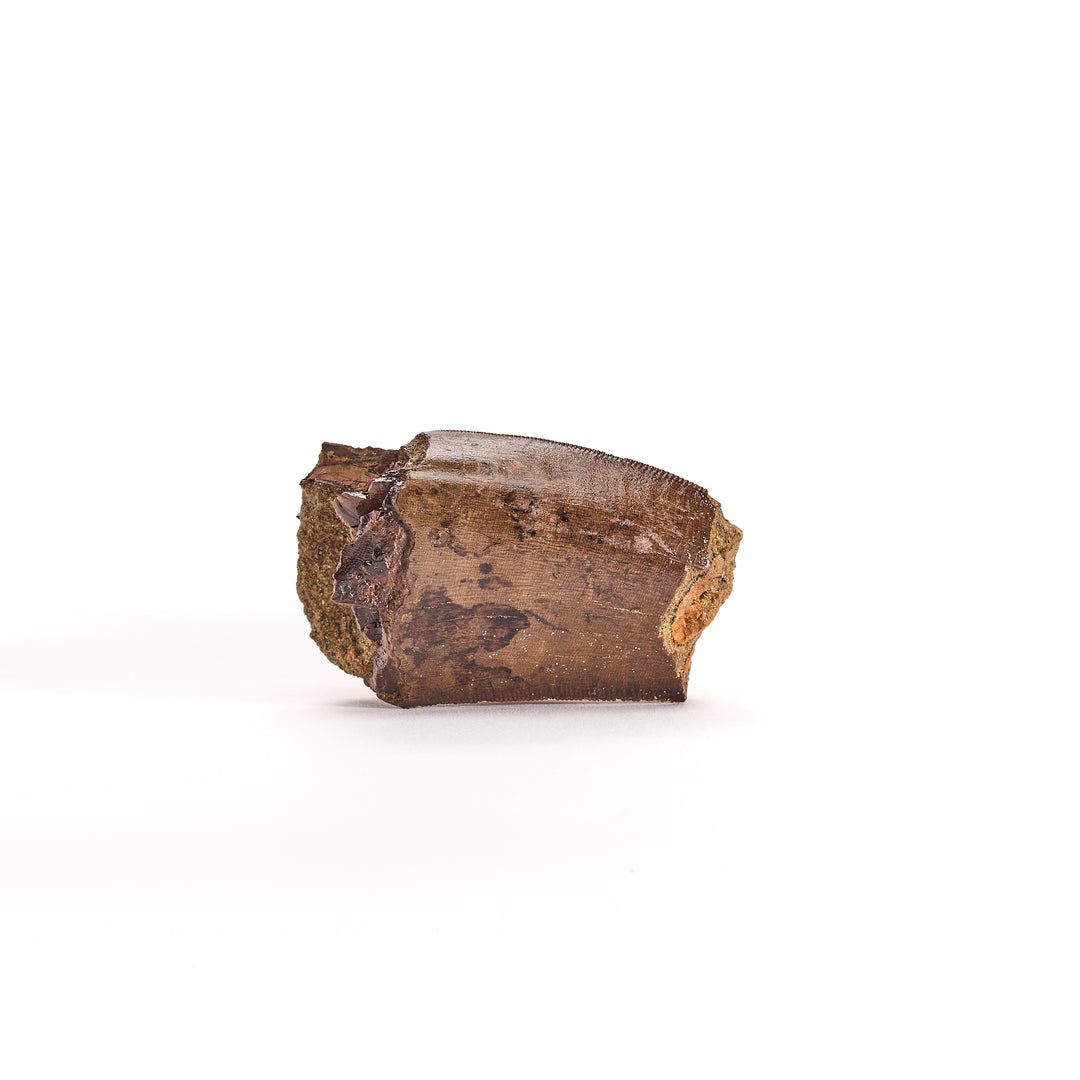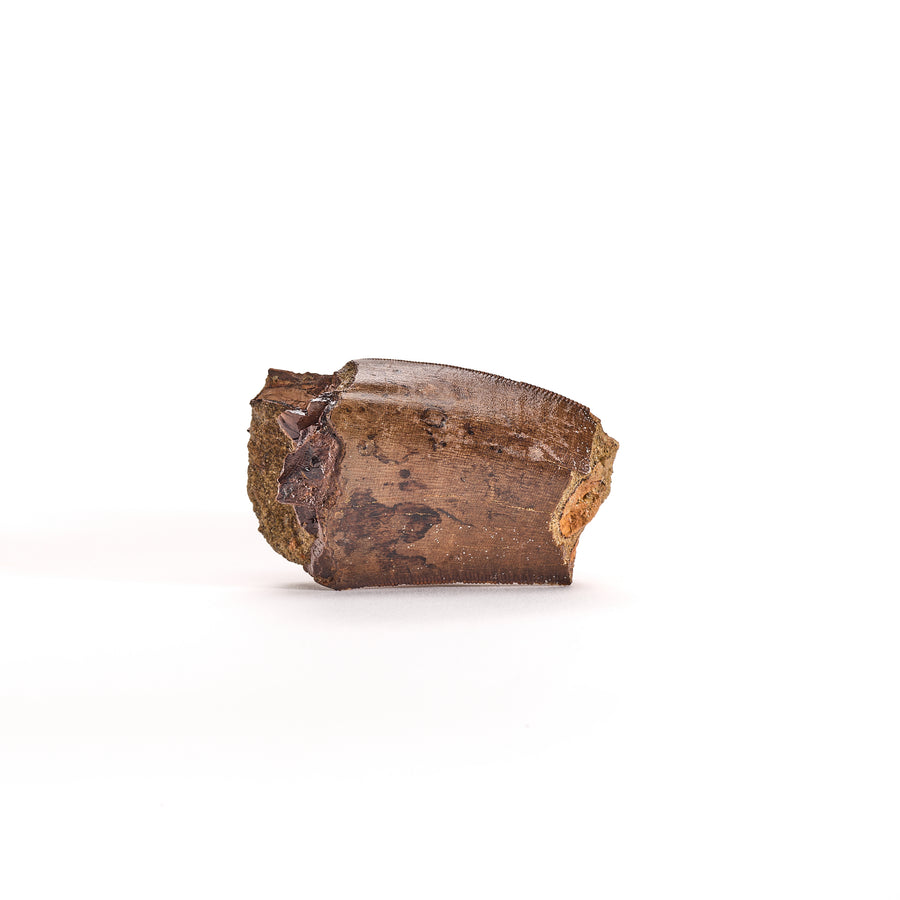
T. Rex Tooth Fossil with Large Tooth Base
Regular price
$2,29500
$2,295.00
Regular price
Sale price
$2,29500
$2,295.00
Save
/
- Free returns
- Low stock - 1 item left
- Backordered, shipping soon
Because of its age and sedimentary composition, the Hell Creek Formation has become one of the most paleontologically studied areas in the world. 158 genera of animals and 64 genera of plants are known from the formation and new discoveries are made frequently. In addition to Tyrannosaurs, Ceratopsids, and Hadrosaurs, the formation has yielded remains of amphibians, reptiles, lizards, snakes and turtles, fish and sharks, avian and non-avian dinosaurs, and mammals. The Hell Creek Formation gives the most complete understanding of the environment just before the Cretaceous-Paleogene extinction.
Perhaps the most famous of all dinosaurs, Tyrannosaurus rex was the largest terrestrial carnivore in North America 66 million years ago, in the Late Cretaceous period. With an adult size of 39-42 feet and 7-9 tons, this formidable predator was also one of the largest terrestrial carnivores to ever live, second only to the African Spinosaurus and possibly rivaled by the South American Giganotosaurus. Tyrannosaurus was likely an opportunistic predator, hunting when it could and scavenging when it couldn't, using its fantastic senses of sight and smell to track potential meals. When it did need to hunt, it had a pair of powerful jaws full of 6 inch teeth that could deliver over 4 tons of pressure per square inch when they bit down.
Their arms, by comparison, are infamously small. Tyrannosaurus rex is known from an abundance of well articulated specimens, including juveniles and subadults, so their growth patterns are well documented. It seems Tyrannosaurus grew relatively quickly, the first ten years reaching about a tenth of their adult size, then rapidly growing to their titanic adult forms in another ten. Based on growth signs in adult specimens, it would seem that Tyrannosaurs rarely lived to be more than thirty, with most seeming to have died in their mid to late twenties. Based on pathologies of fossil bone, we can deduce that this was at least in part due to their dangerous adult lifestyle. Preying on well defended herbivores like Triceratops, Ankylosaurus, and large Hadrosaurs would have been a difficult undertaking, and healed injuries on the bones of these herbivores show that the hunts were not always successful.
Nevertheless, this great predator was one of the largest and most fearsome of the carnivorous dinosaurs, and living at the end of their age, it comes as no surprise that it be dubbed such an imposing name as "Tyrant Lizard King".
2 inches long, 1.25 inches wide, 0.75 inch thick
This Item is Eligible for Shipping
